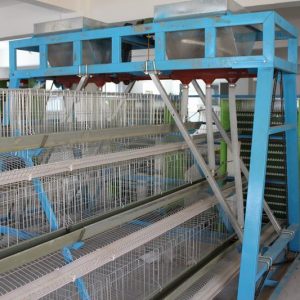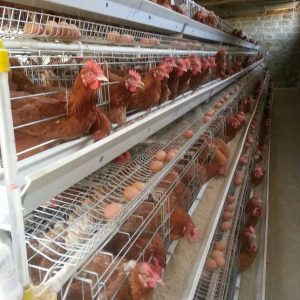
Main points of Cordyceps chicken breeding technology
How to raise Cordyceps chicken? Although the price of Cordyceps chicken is much more expensive than ordinary chicken, it is still favored by the market. So how to raise Cordyceps chicken? Is Cordyceps chicken breeding technology easy to master?
How to raise Cordyceps chicken?
Cordyceps chicken breaks the traditional breeding model, does not rely on full-price compound feed, and uses all-natural food for feeding, without drug residues.
The feeding method is simple, and can be caged, captive or free-range. Only ordinary energy feed, such as small insects, worms, pastures, grass seeds, green vegetables, etc. is required. Among them, due to its high nutritional value and low feeding cost, Phoenix insects have gradually become the best choice for farmers to feed Cordyceps chicken.
Due to its strong omnivorous nature, its digestive tract is particularly developed. The 90-day-old rooster weighs 1.25-1.5 kg, and the hen weighs 1-1.25 kg. Adopt the ecological chain breeding mode, use animal and poultry manure to raise small insects, plant forage grass, and form a food chain. , Favored by consumers. At present, there are less than 50,000 chickens in Cordyceps in China, mainly distributed in Guangxi, Hebei, Chongqing and other regions, and raised by professional households. In recent years, small chicken breeds are very popular, and the price is 2-3 times that of ordinary chickens. They are favored by the market and the breeding prospects are broader.
Main points of Cordyceps chicken breeding technology
Feeding management of stocking Cordyceps chicken before dewarming
The feeding stage before stocking Cordyceps chickens is 1 to 42 days old, and five stages should be kept at this stage:
1. Chick quality
Free-range chickens are generally selected and raised with healthy and healthy meat chicks. Healthy chicks feel full and elastic in hand, the egg yolk is well absorbed, the umbilical opening is closed, the feathers near the mouth of the cloaca are clean, the fluff is plump and neat, the color is bright and the length is moderate, the cry is crisp, and the eyes are bright and bright.
2. Drinking water and opening food for chicks
After the chicks were taken back to the brooding room for a short rest, they were given water to drink first, drinking 1: 5000 potassium permanganate water for the first time, then drinking warm boiled water, and gradually supplying general domestic water after 1 week. Chicks are eaten 12 hours after they are out of the shell, so the time for the chicks to be out is usually arranged during the day to allow enough time for training in feeding. Mix the full-price feed with moisture, the dryness and wetness should be clumped with hands and loosened to disperse. Sprinkle the feed directly on the red plastic cloth in the first week, and gradually change to dry powder after 1 week, and feed the chick trough. Feeding frequency: 7-8 times a day in the first week, not less than 5 times in the future, and provide sufficient feed and drinking water to make each chicken draw as needed.
3. Online flat brooding pass
After taking the chicks back from the hatchery, they are reared in a plastic net or wire netting 60 cm above the ground in the brooding room.
4. Brooding environment
Keep the temperature in the brooding room relatively stable, and avoid high and low, 35 ℃ at 1 day, 33 ℃ at 1st week, 30 ℃ at 2nd week, 28 ℃ at 3rd week, 25 ℃ at 4th week, 23 ℃ at 5th week From the 6th week, the temperature should be trained according to the changes in local temperature. The temperature should not be given during the day, only at night, not on the sunny day, and the temperature should be reduced when the weather is overcast, then gradually reduce the daily temperature. Times, and finally completely de-heated. During the dehydration period, the breeder should pay attention to observe the flock at night to prevent crowding and overcrowding. Relative humidity: 65% to 70% at 1 to 10 days of age, 60% to 65% at 10 to 30 days of age, and 55% to 60% in the future. 1 to 3 days old all day light, after 3 days old, gradually shorten the light time, 15 days old only use natural light, no longer artificial light. Ventilate in time to keep the air fresh in the house. Adjust the feeding density in a timely manner to ensure the healthy growth of chicks. As the age of chickens increases, the number of chickens per unit area is continuously reduced. 50 birds per square meter in the first week, 40 birds per square meter in the second week, and 30 chickens in the third week / M², 25 animals / m² in the fourth week, and 20 animals / m² in the fifth to sixth weeks.
5. Feed drinking water
Ensuring adequate feed and drinking water is the key to ensuring the healthy growth of chicks. The formula of free-range cordyceps chicken is: corn 60%, broad bean (adzuki bean) 25%, wheat bran 5%, fish meal 8%, bone meal 1.7%, salt 0.3%.
Rearing management of free-range Cordyceps chicken
The rearing stage of free-ranging Cordyceps chickens is 43 ~ 120 days old. Three phases of work should be done at this stage:
1. Strengthen chicken management
After the chicks are removed from the temperature, they will be transferred to a chicken coop. Minimize interference and keep the environment quiet.
2. Grazing timely
Do signal training before stocking, use the whistle as a signal, give the feed while blowing the whistle, let the chicken feed, after a week of training, when the chicken hears the whistle, you can immediately return to the breeder to ensure timely Gather the flock. Strengthen the care of chickens to prevent accidents such as rainstorms and animal damage. When stocking from spring to late autumn, choose a sunny day without wind. In the first few days of stocking, stock 2 to 4 hours a day, and then gradually extend the time. Chickens should not be stocked too far, generally controlled within 1 km. Carry out district-based rotation grazing, divide a certain area of pasture into several grazing plots, separate each other with a 1.5-meter-high nylon net or a fence, and use starry formations for stocking in each plot. The chickens should be organized reasonably, and the strong and weak groups should be grouped for stocking. Each group should be 250-300 birds. The chickens should not be too large. Generally according to the type of mountain pasture and the quantity and quality of pasture, the stocking density is 25-30 grasses per 667 square meters.
3. Scientific feeding
According to the growth and nutritional status of pasture grasses, feed the chickens in buckets or troughs scientifically, feed once, early, middle, and evening in the first week, and once in the morning and evening in the second week. The daily supplementary feeding amount of each chicken after grazing is 50 to 150 grams. After more than two years of production trials, the supplementary diet formula: corn (wheat) 60%, fava bean (adzuki bean) 23%, alfalfa meal 16.7%, salt 0.3%.


